Mercedes-AMG's New 416-HP Engine Is the World's Most Powerful Four-Cylinder
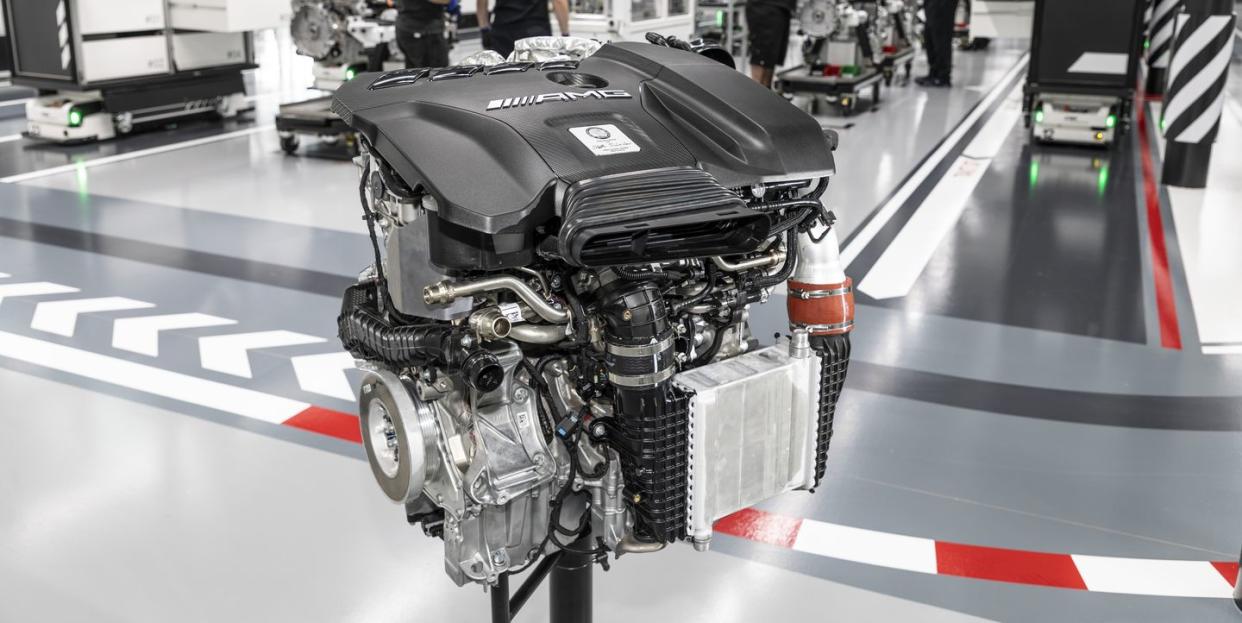
Mercedes-AMG has revealed its new turbocharged 2.0-liter inline-four, and it's the most powerful series-production four-cylinder in the world.
It makes 416 horsepower and 369 lb-ft of torque in top trim, giving it a specific output of 208.9 horsepower per liter.
The new engine will be put in the A45, the CLA45, the GLA45, and the GLB45.
Mercedes-AMG has released full technical details on its brand-new M139 four-cylinder engine, and its headline specs are fairly insane. The turbocharged 2.0-liter inline-four makes a maximum of 416 horsepower, giving it a specific output of 208.9 horsepower per liter. That makes it the most powerful four-cylinder engine in series production, and its specific output is higher than pretty much every modern supercar. And the best part? It will be put in a host of new compact Mercedes-AMG models, almost all of which will come to the United States.
Before we get totally into the weeds with technical stuff, a little bit more on the basic specs. The engine will come in two trims, base and S. The base version makes maximums of 382 horsepower at 6500 rpm and 354 lb-ft from 4750 to 5000 rpm, while the S puts out its 416 horsepower at 6750 rpm and 369 lb-ft from 5000 to 5250 rpm. (The S generates a bit more boost.) It's a whole lot more powerful than the turbo four in the current CLA45, which makes 375 horsepower and 350 lb-ft, and the new engine's 7200-rpm redline is 500 rpm higher. Wet, the engine weighs a claimed 354 pounds.
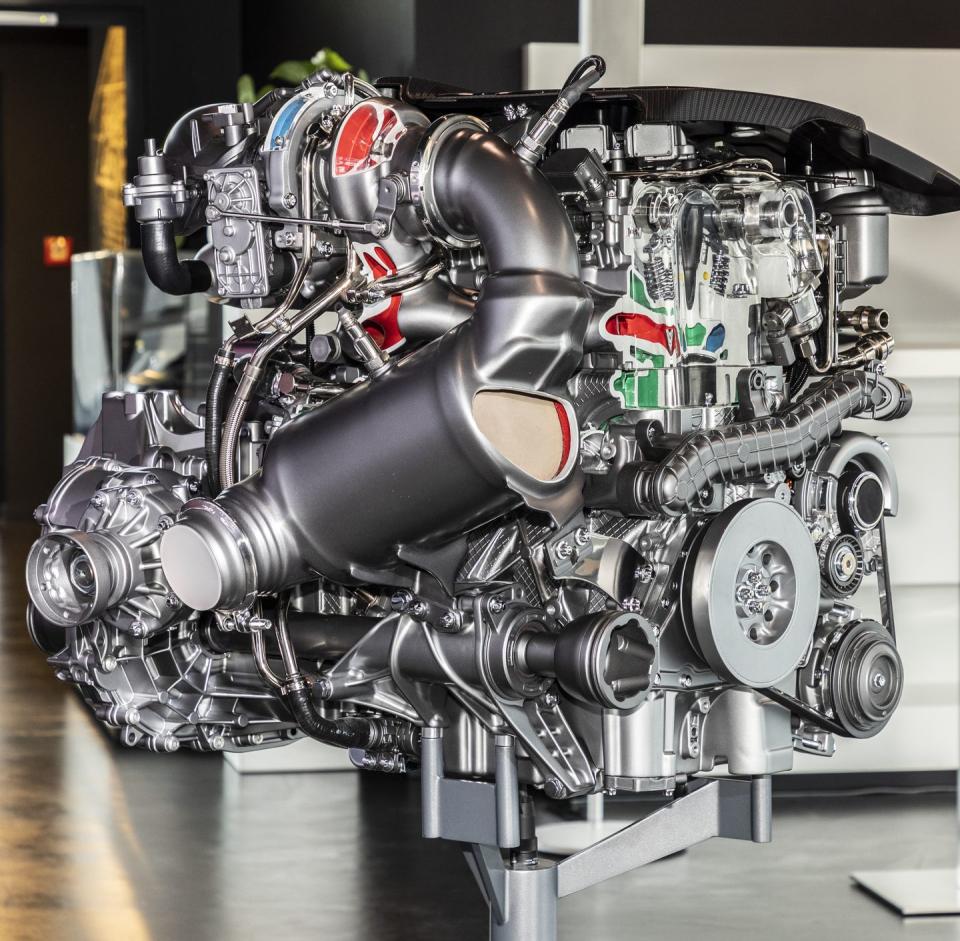
Unlike the previous engine (and the engine in the new AMG 35 models), which was mounted transversely, this new one breaths opposite so the exhaust manifold and turbocharger are at the rear (next to the firewall) and the intake system is at the front (next to the bumper). This allows for a flatter front section, which helps with aerodynamics, as well as shorter air ducts with fewer diversions both for the exhaust and the intake.
The twin-scroll turbocharger is new and fitted with roller bearings for the first time, reducing mechanical friction so the turbo can spin more easily. Both the turbine housing and the exhaust manifold are divided so the exhaust flow can be separately fed into the turbine. The wastegate is electronically controlled, allowing for better responsiveness and more precise control of the intake pressure. The turbocharger is cooled by fresh air, oil, and water. Air gets to the turbo housing via a ducted engine cover, which is designed like an air deflector—a technique borrowed from the AMG GT's twin-turbo 4.0-liter V-8. AMG says the M139 has a power delivery akin to a naturally aspirated engine's and a "dynamically increasing" torque curve.
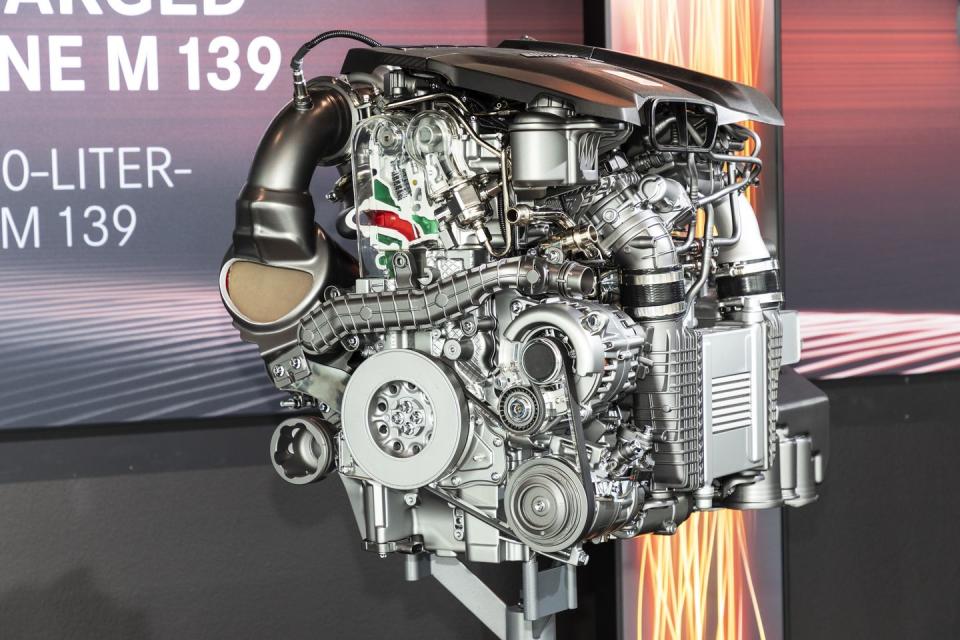
The engine block is from chill-cast aluminum, meaning molten aluminum is poured into a water-cooled metallic mold that allows quick cooling and solidification. The result is a dense, high-strength structure. AMG says the closed-deck construction is taken from race cars and gives the crankcase an exemplarily rigidity-to-weight ratio and allows for higher peak combustion pressures.
The low-friction, high-strength crank assembly consists of a forged steel crankshaft and forged aluminum pistons. The larger sump has baffle plates to reduce the chance of oil starvation in long corners. Like the old engine, the new one uses AMG's Nanoslide cylinder coating, which results in a mirror-like finish that gives the cylinder linings minimal friction. The coating was first used on the M156 6.2-liter V-8 and is currently used in Mercedes' Formula 1 cars.
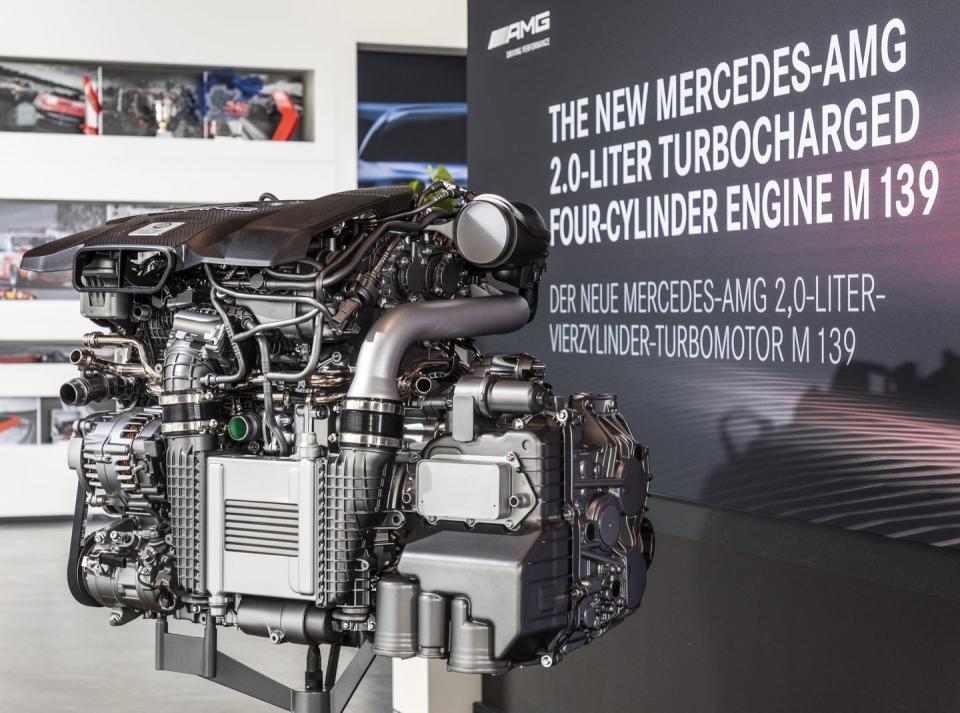
Because the spark plugs and injection nozzles have been repositioned in the cylinder head, the exhaust valves have been enlarged, which lets gases out of the combustion chambers with minimal losses. Dual overhead camshafts control the 16 valves, and the engine has Camtronic variable exhaust-valve timing. Like Honda's VTEC, Camtronic uses multiple camshaft profiles, giving the engine full power at high rpm and better response at low rpm in one package.
Another first for an AMG four-cylinder is the use of both port and direct fuel injection, which AMG says was necessary to achieve the high specific-output figure. In the first stage, piezo direct injectors supply fuel to the combustion chambers and when needed, solenoid port injectors supplement the DI system.
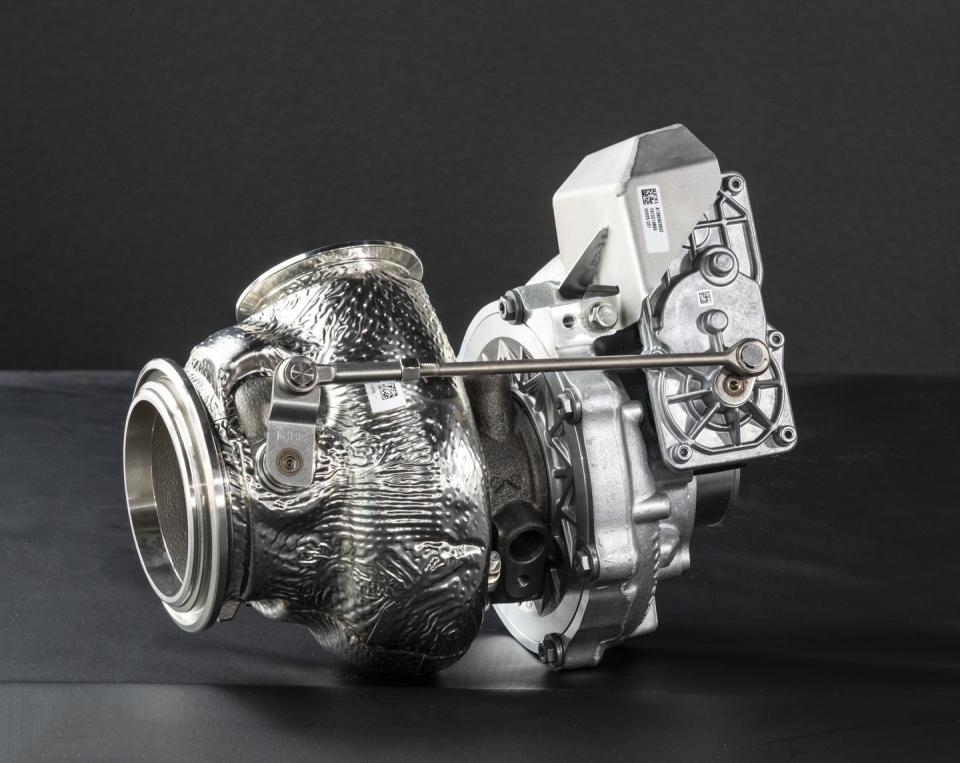
A new engine cooling system consists of a two radiators, one in the wheel arch in addition to the big frontal radiator as well as an air-to-liquid intercooler. All three heat exchangers get their coolant circulated by a variable speed electric pump. The air-cooled ECU is mounted on the housing for the air filter, while the transmission oil is cooled by the engine's coolant circuit and is assisted by a heat exchanger mounted on the transmission.
The engine's electric water pump operates separately from the engine speed and allows the engine block to warm up more rapidly by activating late. It also operates on-demand, and is able to be switched on or off at lower engine speeds as needed. AMG says the new pump "ensures full engine output and optimum heat dissipation" across the engine's entire range, and that it also protects against heat damage when idling in hot climates.
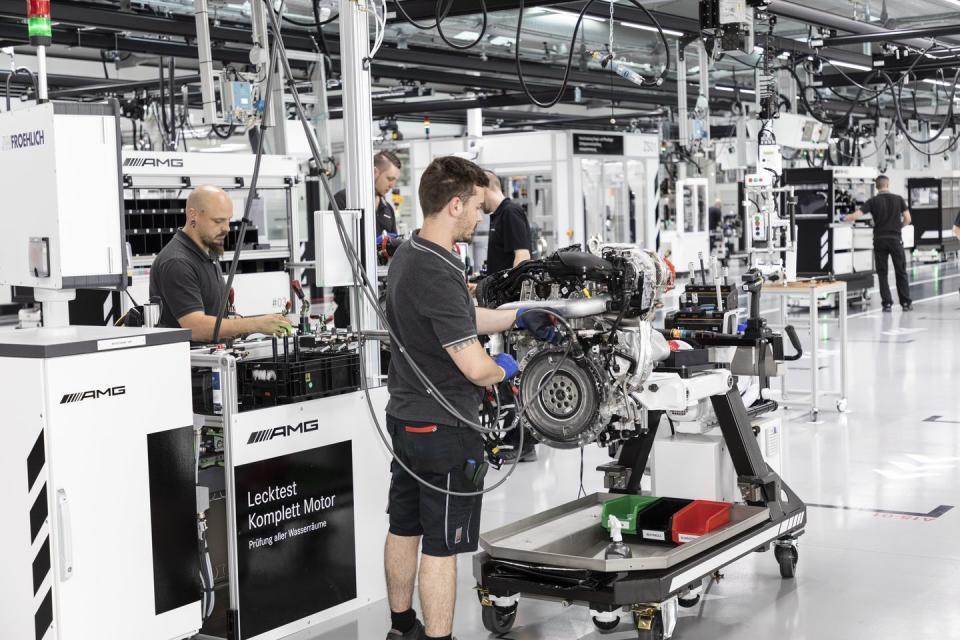
Like AMG's higher-end engines, the M139 is handbuilt at AMG's engine factory in Affalterbach, Germany, under the brand's "One Man, One Engine" program. A new production line was built for the engine, and every technician gets followed by a "driverless transport system" that has its own power supply and takes the engines and cordless tools from one station to the next. Every engine gets a plaque with the signature of the technician that built it.
The first car to receive the M139 engine will be the A45 hatchback, which should debut within the next couple of months. While that car won't be sold in the United States, an A45 sedan is a possibility. The U.S. will definitely get this engine in the upcoming next-gen CLA45, as well as the next-gen GLA45 and the new GLB45 crossovers. In all of these new models, the engine will mate to a nine-speed dual-clutch automatic transmission and an advanced all-wheel-drive system with a "Drift" mode. Given that the current 375-hp CLA45 rocketed to 60 mph in just 3.8 seconds in our testing, we can't wait to see what kind of acceleration numbers the new engine can deliver.
You Might Also Like

